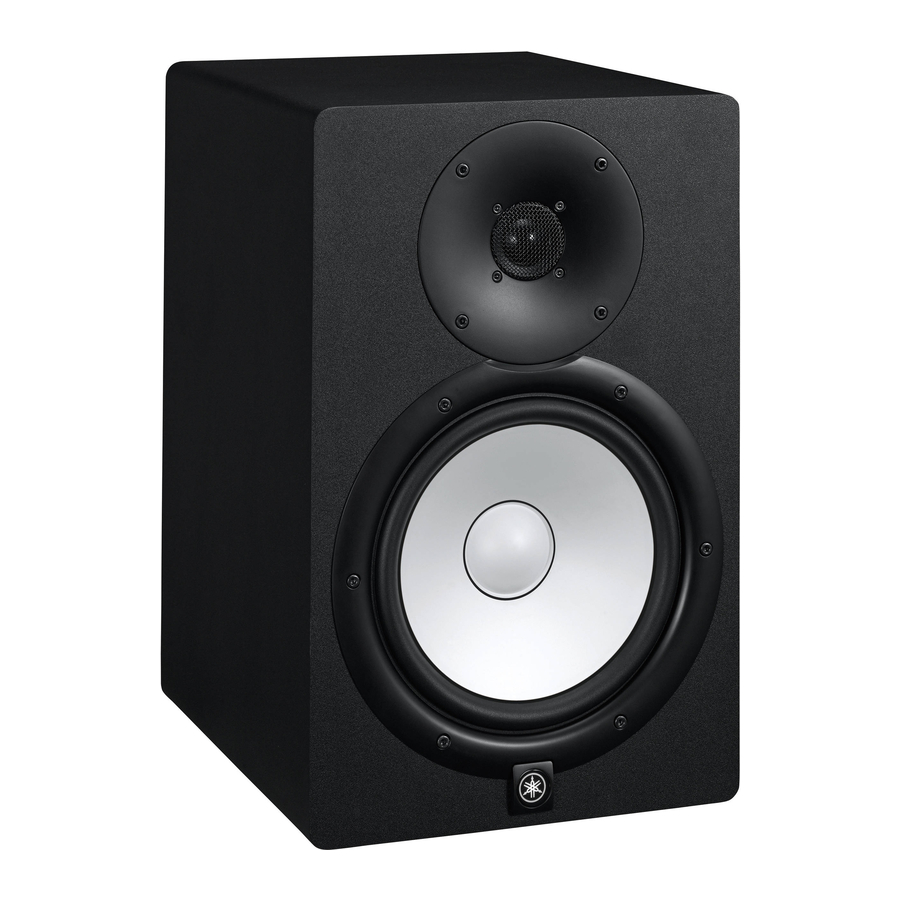Yamaha HS50M Kullanıcı El Kitabı - Sayfa 7
Hoparlör Sistemi Yamaha HS50M için çevrimiçi göz atın veya pdf Kullanıcı El Kitabı indirin. Yamaha HS50M 17 sayfaları. Hs series powered monitor speaker
Ayrıca Yamaha HS50M için: Kullanıcı El Kitabı (16 sayfalar), Servis Kılavuzu (27 sayfalar)

The HS-series speakers are also an excellent choice for
direct connection to your electronic keyboard or other
electronic musical instrument.
Speaker Placement
Speaker placement is one of the most important
considerations when setting up a monitor system, but it is
all too often overlooked with the result that performance is
seriously compromised. Admittedly the obstacles to
perfect speaker positioning in the small studio are
formidable. Having the space available to place your
speaker system so that it can provide optimum
performance is a luxury, but it is definitely worth the time
spent doing a little experimentation and measuring to
make the most of limited resources. The difference can be
astounding. The basics are the same whether you're
setting up a stereo or 5.1 surround system.
Proximity to
Walls and Corners
For the most accurate response your speakers should be
positioned away from walls and especially corners, which
can play havoc with a speaker's frequency characteristics. A
minimum of about 1.5 meters (about 5 feet) away from
walls would be ideal, but in reality they'll probably end up
being placed on a desktop and pushed up against a wall.
Just keep in mind that fact that the closer you get to walls
and corners the more exaggerated the speaker's bass
response is likely to become, and some compensation —
whether you compensate mentally or use some
equalization — will probably be required. The HS50M and
HS80M speakers make this easy by providing a ROOM
CONTROL switch that modifies the speaker's bass
characteristics to compensate for the exaggeration caused
by nearby walls. As your speakers get closer to the walls
you might find that setting the ROOM CONTROL switch
to the "-2" or "-4" setting gives you more natural response
in the bass range. As a reference, remember that you're
trying to approach the way the speakers sound when
they're located more than 1.5 meters (5 feet) away from
the nearest walls.
Symmetry
As we've just learned, the response of a speaker can
change drastically according to where it is placed in
relation to surfaces. So what happens if one of your
speakers is up against a wall and the other is out in the
open? Rest assured that the results will not be good, and
will definitely not be conducive to producing good mixes.
You'll have totally different response from your left and
right speakers, making it next to impossible to create a
well-balanced mix, or even position tracks accurately in the
stereo sound field. So whatever you do, if you're serious
about your sound make sure that your speakers are located
as symmetrically within your listening environment as
possible. Use a tape measure to ensure that your speakers
are the same distance from the side and rear walls. Large
objects can throw the acoustic symmetry of a room off
balance, too. It's also important to be aware of the location
of doors and windows. It is not always possible to achieve
ideal symmetry, but it's worth getting as close as possible.
HS80M/HS50M/HS10W Owner's Manual
7
